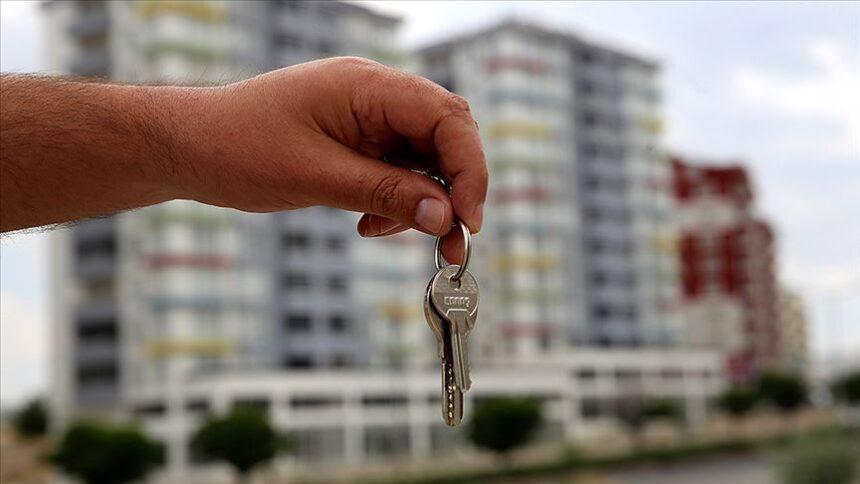Real Estate Investors Association (GYODER) Neşecan Çekici warned about a housing crisis on its way. Çekici reports annual need for 800 thousand housing but new housing production has fallen to 400-500 thousand in the last 2-3 years.
Neşecan Çekici, who took over the Presidency of the Real Estate Investors Association (GYODER) from Mehmet Kalyoncu on November 3, 2023, and GYODER General Manager Kürşat Serkan Hakan told us about the state of the market:
– The housing crisis is on its way…
To underline this heading, he pointed to data on mortgaged home sales. They went back to 2013 to explain the dramatic situation:
– In 2013, the average interest rate on housing loans was below 1 percent. Of the total sales of 1 million 150 thousand, 39.8 percent were sold with bank loans. He underlined that the bank loan utilization rate dropped to 14.5 percent in 2023:
– In the first half of this year, the rate of bank loan utilization in housing purchases decreased to 9 percent. Bank loans were used in only 51 thousand of 545 thousand sales. He noted that in June 2024, monthly sales on credit decreased by 49.4 percent, and 6 thousand 813 houses were sold with bank loans:
– Housing sales with bank loans are now almost non-existent.
GYODER President Çekici reported that the annual need for new housing in Turkey is around 800 thousand:
– For the last 2-3 years, new housing production has fallen to the 400-500 thousand range.
She stated that housing sales decreased by 3.7 percent in the first half of the year:
– 545 thousand 74 houses were sold in the first 6 months of this year. In June 2024, there were 79 thousand 313 sales with a 5.2 percent decrease.
She emphasized that foreigners are in a “wait and see” position:
– Housing sales to foreigners decreased by 48.1 percent in 2023 compared to the previous year and became 35 thousand 005. Last year, the share of foreigners in total housing sales decreased to 2.9 percent. This rate is now below 2 percent.
She shared this year’s data on housing sales to foreigners:
– Housing sales to foreigners decreased by 45.7 percent in the first half of this year compared to the same period of the previous year and fell to 9,21.
She reminded that the rate of loan utilization for new housing by those who own or have family members was reduced to 25 percent:
– This segment was supporting the production of rental housing. A review may be useful here.
She underlined the support given to those who will buy their first home:
– The planned but pending campaign with a rate of 1.2 percent and maturity of 180 months for those who will buy their first home will also have a positive impact on the sector.
She drew attention to the shrinking demand trend:
– In the current conditions, demand in housing is now completely oriented towards projects built in the right location, with the right engineering, and is more selective. In a sense, this disciplines the sector. Economic improvements may relieve some of the tightness in supply and demand.
Despite the troubled period, she also looked at the issue from an opportunity perspective:
– We are in a period when cash is strong in real estate. Since it is a cash-driven market, the bargaining margins have also increased a lot. This bargaining pressure is pushing prices down, especially in high segment houses.
5 million households are ‘solo’
Gyoder Chairman Neşecan Çekici shared the following data on building permit statistics:
-While production permits were obtained for 699 thousand apartments in 2022, this figure was 855 thousand in 2023.
-There are more than 575 thousand marriages and around 200 thousand divorces in Turkey every year.
-More than 100 thousand expatriates and foreigners demand a house.
-The homeownership rate is 57 percent.
-The average number of households has fallen from 4 in 2008 to 3 and the decline continues.
-Therefore, there should be at least 1 million production so that organic demand can be met.
At this point, she emphasized the following definition and data:
-5 million households in Turkey have “solo life”. In other words, the number of people living alone in their households is increasing, especially divorcees, students and the elderly.
Construction costs increased 14-fold since 2015
In May 2024, the construction cost index increased by 1.11 percent compared to the previous month and by 72.78 percent compared to the same month of the previous year.
The construction cost index, which was 100 in 2015, became 1400 as of March 2024. In other words, there was a 14-fold increase.










